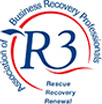What is Company Voluntary Arrangement?
A company voluntary arrangement is different to other forms of insolvency in as much as the directors retain full control of the business once the business enters a CVA. The Insolvency practitioner is only there to ensure that the company complies with its obligations under the CVA proposal.
For a CVA to be implemented, certain criteria need to be met:
- The company must have a good underlying business
- The company must be capable of generating profits and cash once the pre CVA debt has been frozen
- The company will need the support of its key clients and suppliers going forward post CVA
- Ideally there should not be a winding up petition issued – if there is then discussions will need to be had with the petitioning creditor
- The company will need the support of its lenders
- The company, post CVA must be capable of funding itself within its established credit limits with suppliers and other lenders.
A CVA is effectively an agreement between the company and its creditors to freeze the existing debt whilst allowing the company to continue trading making contributions over a period of time to pay a pre agreed distribution to the creditors. The insolvency practitioner will need to write the CVA proposal to go to the creditors. This will include a summary of:
- The company’s history
- The company’s problems
- The reasons for those problems
- Steps to be taken to address the current issues
- Details of the proposed contributions into the scheme
- Details of the proposed distributions to the creditors and the likely timings of such distributions.
It is for the directors to decide what level of distribution to propose, based on input from the insolvency practitioner. However, bear in mind, that for any proposal to be approved, it will require 75% acceptance from your creditors. There is little point proposing repaying 3p in the pound over 5 years, when you know it will be rejected. Creditors can also seek modifications to your proposal – we can discuss this in further detail with you, if you think that a CVA is right for you.
The CVA will come to an end either on the following:
• A successful distribution to creditor inline with the original proposal
• A notification of failure issued by the insolvency practitioner – this though is a last resort.
The Insolvency Practitioner will only issue such a notice after extensively discussing with you the reasons for none compliance.
Once the CVA successfully comes to an end, the insolvency practitioner ceases to act, and the company continues under the full control of the directors.
For help and advice for London based businesses, call our local London Insolvency team for free, no obligation help and advice with all company insolvency issues.


